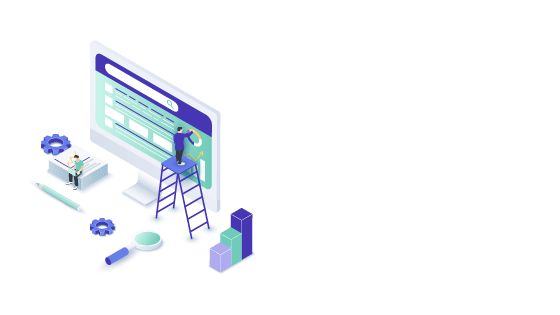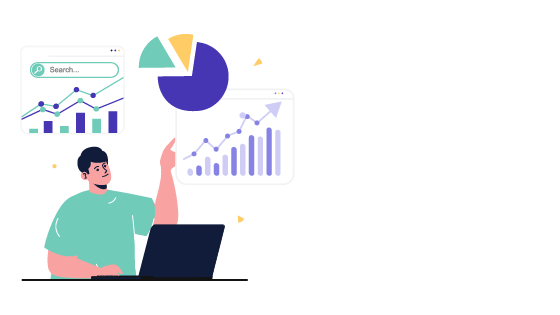
In today’s digital age, where attention spans are fleeting and website visitors demand instant gratification, a visually appealing and fast-loading website is crucial. Images play a pivotal role in engaging users and conveying information effectively. However, incorporating high-quality images without considering their impact on website performance can slow loading times and hinder search engine optimization (SEO) efforts.
This is where image optimization comes into play. By optimizing images and reducing their file size, website owners can strike the perfect balance between the curb appeal of their site and fast-loading pages, improving user experience and boosting their website’s SEO performance.
Understanding the Power of Image Optimization for Web Performance

Various elements are considered when optimizing websites for search engines, such as content relevance, website structure, and page load speed. Though often overlooked, images play a vital role in all these aspects. Optimizing images for the web offers numerous benefits that go beyond visual aesthetics, including:
Improved Page Load Speed
Large image file sizes can significantly slow a website’s loading time, leading to frustrated visitors and high bounce rates. When images are not optimized, they can consume a significant portion of the page’s resources and cause delays in rendering. However, website owners can reduce file sizes by optimizing images with an image CDN without compromising visual quality, resulting in faster page load speeds and a smoother browsing experience.
Image Compression
One of the techniques used to optimize images is image compression. This process involves reducing the file size of an image by removing unnecessary data while maintaining an acceptable level of image quality.
Compressing images lets website owners significantly reduce their file sizes without compromising the overall visual appeal. This is achieved through lossy and lossless compression techniques, depending on the specific requirements of the image.
Pro Tip: You can handle your image compression and optimization on autopilot by leveraging an image CDN. We recommend testing the performance of your pictures by using our free online tool. Click here to test yours.
Optimizing Image Formats
Choosing the right image format is crucial for achieving optimal file sizes without compromising image quality. Different image formats, such as PNG and JPEG, have their own compression algorithms and capabilities. PNG images are best suited for images with solid colors or transparent backgrounds, while JPEG images are ideal for photographs with complex color gradients.
By selecting the appropriate image format for each specific image, website owners can further optimize file sizes and ensure optimal rendering on different devices and screen sizes.
Tired of guessing which image format will perform the best for your end users? Let our image CDN do it for you! Claim your 30-day free trial to see how ImageEngine can remove the headache from image optimization.
Same Image, Different Formats
Another method of image optimization is providing multiple formats of the same image. Website owners can create responsive code that caters to various devices and browsers by offering different formats, such as PNG and JPEG. This type of image optimization aims to deliver the image in the most optimized format for each specific scenario, resulting in faster loading times and improved user experience. However, it is worth mentioning that this takes time and effort, making it an inefficient method of optimizing your images for web performance.
Enhanced User Experience
User experience (UX) is a crucial factor in determining the success of a website. Optimized images play a significant role in providing a seamless browsing experience for users, allowing them to navigate effortlessly through the website and engage with its content without interruptions caused by slow loading times.
Optimizing Image Quality
Image optimization is not solely focused on reducing file sizes but also on optimizing image quality. By carefully balancing image compression and visual appeal, website owners can deliver images optimized for performance and visually appealing. This ensures that users can enjoy high-quality images while benefiting from faster load times.
Optimizing for Different Devices
Optimizing images for different devices has become essential with the increasing variety of devices and screen sizes. By delivering appropriately sized visuals that match the device’s screen resolution, website owners can enhance the user experience across all platforms.
This approach prevents unnecessary data transfers and ensures that the images are displayed correctly, improving load times and overall user satisfaction.
Are you looking to optimize images for every device on autopilot? Let us help you out! ImageEngine is an easy-to-use plugin for your website that optimizes images for every browser and device without all the legwork. Click here to claim your 30-day free trial.
Strategies to Optimize Images for Maximum Impact
Now that we understand the importance of image optimization for web performance and SEO let’s explore some effective strategies to optimize images and enhance website performance:
- Choose the Right File Format: When it comes to web optimization, selecting the appropriate file format is essential. While JPEG is commonly used for photographs, PNG is ideal for images with transparent backgrounds. Utilizing the correct file format ensures optimal visual quality while keeping file sizes in check.
- Compress Images without Compromising Quality: Compression is a key technique to reduce image file sizes without sacrificing visual quality. Various online tools, image CDNs, and software can compress images effectively, removing unnecessary metadata and reducing file sizes to enhance page load speed.
- Implement Responsive Image Techniques: With the prevalence of mobile browsing, responsive design has become paramount. Implementing responsive image techniques ensures that images adjust and resize according to the user’s device, reducing the need to load large images on smaller screens and further optimizing the website’s performance.
- Leverage Lazy Loading: Lazy loading is a technique that defers the loading of images until the user scrolls to a specific section of the page. By implementing lazy loading, websites can reduce the initial load time, allowing visitors to view the content quickly while images load progressively as they become visible.
- Device-Aware Delivery: Bare with us while we nerd out for a minute here. Content Delivery Networks typically perform basic functions such as content storage and delivery. However, a device-aware image CDN offers enhanced functionality with device detection incorporated into its business logic. That means delivering the perfect image to each unique viewer on your website.
What that means for the non-techy folks out there:
To put it in simpler terms, imagine a shopper in London browsing an online store on their iPhone 15. When the shopper clicks on a product to view its image, their phone sends a request to a local server in London. This server has device-aware technology (WURFL) – it not only recognizes that the request is coming from an iPhone 15 but also understands the phone’s unique capabilities, like its operating system, screen resolution, pixel density, and its ability to handle certain types of image and video files. Using this information, the server, part of what’s known as an image Content Delivery Network (Image CDN), either processes the image request on its own or shares these device details with other parts of the CDN. This helps ensure the image is delivered in the best possible format for the iPhone 15, providing the shopper with the best possible browsing experience.
The Impact of Image File Size on SEO

When it comes to search engine optimization (SEO), every element of a website matters, including image file sizes. Here’s how image optimization impacts SEO and why it is essential for website success:
Improved Page Ranking
Search engines consider page load speed as one of the factors when determining rankings. Websites that load quickly provide a better user experience and are more likely to rank higher in search engine results. Website owners can significantly improve page load speeds by optimizing images and reducing their file sizes.
This optimization contributes to faster website performance, leading to improved SEO performance and increased visibility in search engine rankings.
Reduced Bounce Rates
Slow-loading websites often experience high bounce rates, as users tend to abandon a page if it takes too long to load. This can hurt SEO, as search engines interpret high bounce rates as a signal that the website may not provide relevant or valuable content.
Optimized images are crucial in reducing bounce rates by improving page load speeds. When visitors encounter a website that loads quickly and seamlessly, they are likelier to stay, explore, and engage with the content. Ultimately leading to lower bounce rates, improved user engagement, and enhanced SEO metrics.
Enhanced User Experience
User experience is a vital aspect of SEO. When it comes to images, optimized file sizes contribute to a seamless browsing experience. Faster loading times enable users to navigate the website smoothly without frustrating delays. By providing a positive user experience, website owners can increase user engagement, encourage longer visit durations, and decrease bounce rates.
Search engines recognize these signals of a satisfying user experience, enhancing the website’s SEO performance even further.
Mobile Optimization
Mobile optimization is an integral part of SEO, considering the increasing number of users accessing websites via mobile devices. Slow-loading images can significantly impact mobile browsing experiences, leading to higher bounce rates and decreased search rankings.
Image optimization plays a crucial role in improving mobile performance by reducing file sizes and ensuring faster load times. This enhances the overall mobile user experience and contributes to better SEO rankings for mobile search results.
Putting the Internet on a Diet with ImageEngine

In today’s digital landscape, where speed and user experience are paramount, image optimization for web performance and SEO plays a critical role. Website owners can achieve the perfect balance between visual appeal and fast-loading pages by optimizing images, reducing file sizes, and employing advanced techniques like those provided by ImageEngine.
As new file formats emerge and CDN frameworks evolve, ImageEngine remains the premier solution for simplifying and accelerating image optimization. We continue to prioritize the best possible user experience, the fastest websites, and the smallest image files. ImageEngine helps put the internet on a diet while reducing global carbon emissions associated with excessive image file sizes.
With a commitment to continuous improvement, ImageEngine has garnered numerous awards and a growing customer base. Please take advantage of the opportunity to optimize your website’s images and boost its SEO performance.
Try ImageEngine and experience the transformative power of image optimization. Claim your commitment-free 30-day trial by clicking here.
